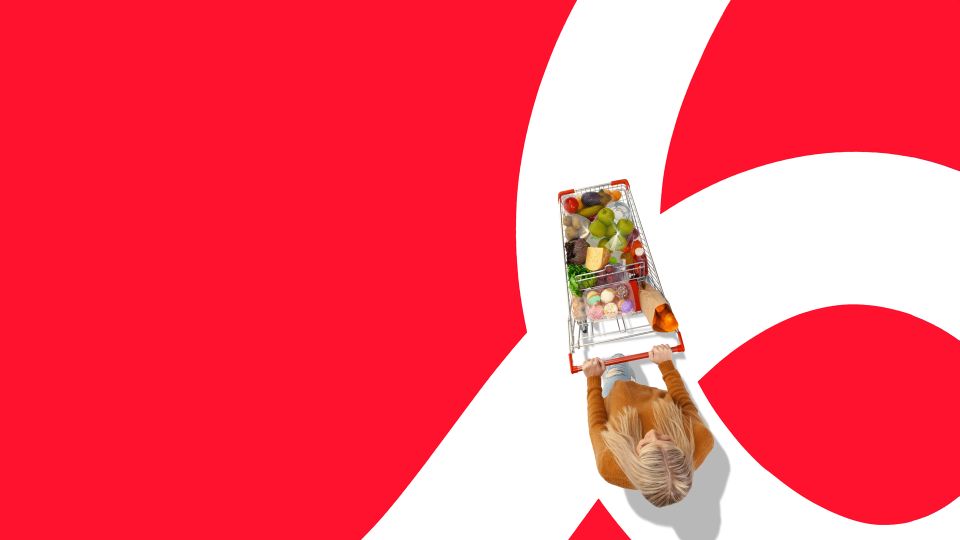Welcome to Marketers’ Pain Points, a new column from Quad Insights that discusses specific solutions to common marketing problems
Q: As a marketer for a national retail chain, my team is feeling more and more pressure — from customers and investors — to find ways to adopt sustainable solutions and shrink our carbon footprint. One obvious area of concern is in-store displays related to various sales, seasonal promotions and product launches. It just feels like we’re cycling through, and discarding, so much material during a year. What are some of my options when it comes to thinking about in-store marketing through a sustainability lens?
You’re not the only one feeling this pain point. Quad helps hundreds of retailers with in-store displays and signage, and sustainability has really come to the forefront as an issue they’re concerned about, notes Tom Solomon, Director of Design & Innovation at Quad In-Store.
“In the last year, more and more clients have been challenging us to find sustainable solutions for all their programs, both permanent and temporary, like holiday-related displays and signage,” Solomon says.
The design, estimating, sampling, production, kitting and shipping of signs and displays is a complex process to begin with; adding in sustainability makes it more so. But the potential benefit is great. For example, grocery retailers typically display 30 new signs in their stores each week, which rises to 50 to 60 weekly signs during the holiday season. If you take an average-size regional chain with 500 stores, that adds up to between 15,000 and 30,000 signs — each week. With more than 63,000 supermarkets and grocery store businesses across the U.S., the environmental impact for that one retailing segment alone is huge.
The National Retail Federation (NRF) has recognized the importance of environmental concerns with a Statement on Climate Change supporting its members’ efforts to reduce their direct impacts on climate change. Shoppers are also on board. Earlier this year the NRF’s newsletter reported on research showing 62% of U.S. consumers identify climate change as an extremely or very serious issue, and 78% say they want to buy from environmentally friendly companies.
In-store displays and signage are a good place to start. Seasonal displays stay up for 60 to 90 days, and even “permanent” displays typically remain in place for only one to four years. Preparing them involves setting up the final concepts in-store for executive walkthroughs to determine final adjustments. Those displays are then taken down and discarded.
Most retailers now have goals and initiatives in place to remove plastics and reduce the volume of one-time use materials, according to Solomon, and they’re looking for a partner that can help them do that. Quad is happy to help. For one client, an international beauty retailer, Quad In-Store updated its U.S. window signage program, reducing the total amount of corrugated material used by more than 50%.
“We’re saving 13 trees every time we run the campaign — 156 trees annually, which amounts to 9.28 tons of actual paper saved each year — just by looking at this a little differently,” says Solomon.
Quad In-Store also found a way to remove the poly bags used to separate different parts of this retailer’s front-of-store table and tower display kits, which has eliminated 311,000 poly bags annually.
Recognizing that appearance is a major consideration for in-store display work, Quad works with clients to find plastic alternatives that are also aesthetically pleasing.
“We can replace a plastic sign hanging in the store with a corrugated cardboard sign that would be recyclable and also less expensive, but most clients don’t like the way cardboard looks,” Solomon observes. “We’re often asked to find a material that’s more recyclable, but still has the same look and feel as plastic.”
One option: paper-based, 100% recyclable materials such as Imagemax, which can, for example, replace plastic gift cards and hotel key cards while still seeming like the old cards.
Communicating to consumers what you’re doing to shrink your environmental impact is part of the sustainability equation. Currently, there’s no easy way to do that when it comes to in-store displays and signage, but Quad is developing a coding system to let shoppers know that displays/signs are recyclable, Solomon says. The Quad In-Store team also works with retailers in other ways to help them promote their sustainability commitment and activities, he adds.
Technology also can play a role in helping reduce the environmental impact of in-store displays. Quad’s designers use software called Store Visualizer to build a virtual retail environment for evaluating displays before they’re put into brick-and-mortar stores. It allows retail executives to review a proposed signage program even before the sampling stage. They can do virtual walkthroughs and ask for changes without wasting materials.
Quad uses another third-party software tool, SellCheck, to take the evaluation process one step further, providing quantitative data on displays. It involves running a digital image of signs or in-store displays through eye-tracking technology that shows how they are performing in a given space. Both steps keep wasted material to a minimum.
“This virtual approach is not only good environmentally, it can shorten timelines in crunch periods like the holidays,” Solomon notes.
Want to learn more — and continue the conversation? Reach out to Tom Solomon, Director of Structural Design & Innovation, Quad In-Store, at tjsolomon@quad.com.



